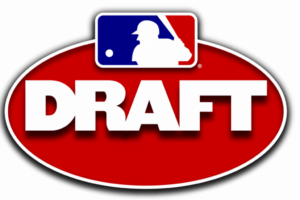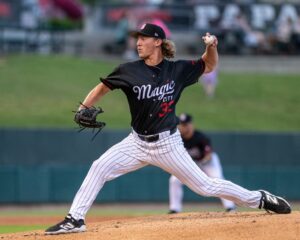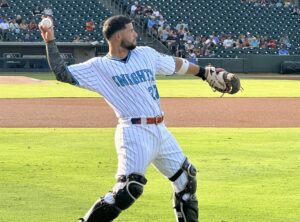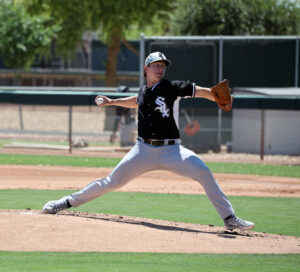Why Micah Johnson should not be moved to the outfield
Look around social media, and you’ll see people suggesting with some regularity that the White Sox should move Micah Johnson from second base to the outfield. This is not just coming from fans, but also blogs and pundits. Sometimes it is stated outright, and other times referred to obliquely. It is a reaction to the exposure of Johnson’s defensive problems at second, and certainly his play there was a problem during his brief stay in the majors (as it was in the minors as well).
Micah is fast. He’s got 70-grade or better speed. Unfortunately, the reasons to believe he would succeed in the outfield begin – and end – right there.
Johnson certainly has the speed to eat up ground in the grass, so his potential range would be significant. But pure speed is not by itself enough to succeed there. Let’s look at the list of reasons why he isn’t likely to do well making that move…
1. The Arm
I have two main points concerning Johnson’s arm in the outfield. First, Johnson’s arm is average at best for a second baseman. Put that arm in the outfield, and he’s below average. The outfield slot with the lowest bar to hit for arm strength is left field, but you also waste that speed by not putting him in center. So you are diminishing his value exposing his arm this way, not to mention that his bat is less likely to play to Major League average among left fielders.
Second, remember that Micah had emergency surgery to repair the ulner nerve in his elbow in college (2009). He then had a second procedure on the same area in 2014, this one intended to be more permanent. Speaking with an athletic trainer who has worked with the major league club, this particular type of condition is likely related to problems in his throwing motion.
If you put him in the outfield, he’s having to throw much harder. You are putting his health at risk, and in this case the original condition was more than just a baseball injury – it could be quite serious. That doesn’t even touch on other arm injuries that are more likely in the outfield, especially for someone who hasn’t played there. Remember that it was a move to the outfield that ended up being the final trigger resulting in Tyler Saladino missing parts of 2014 and 2015 with Tommy John surgery.
2. The Experience
Moving between the infield and the outfield in pro ball is not some simple thing. Johnson is a perfect illustration of this already. Here’s a premium athlete with all the physical tools to succeed at second base, and even after playing there for years in college and now four years in the pros, and he’s still below average at the position. It isn’t a lack of work ethic either – he’s put in a lot of extra time on defense the last few years. But playing on a Major League field at an acceptable level is, obviously, very hard to do.
If you move a player from the infield to the outfield, they are re-learning a lot of their defensive game. Reactions and pre-hit adjustments, reads on balls en route, routes taken, and throws are all different. If Johnson has had this much trouble at second with even routine plays, what makes anyone think he’s likely to become good in the outfield in the short term?
3. The Fly Balls
If you’ve watched Micah Johnson play second base in the past few seasons, in the majors and minors, you’ll see that two of his major issues are footwork (both associated with fielding and throwing) and pop flies. Those are key pieces to get right in order to be a successful in the outfield. Meanwhile the areas he shows more promise – flip throws and turning nifty double plays – don’t even come into play out there.
Fly balls to the outfield are of course different than what you get on the infield, but then again, that’s something else he hasn’t seen yet.
4. The Need
The current starting outfielders on the White Sox are all under contract for multiple years after 2015, and none are likely trade candidates (at least not this year). The team already has a competent 4th OF (J.B. Shuck), and a player in Charlotte who looks ready to at least be that (Trayce Thompson). Simply put, there’s nowhere in the outfield he’d be able to play the next couple seasons, most likely.
On the other hand, the team clearly needs help on the infield. He’s got Carlos Sanchez, Saladino and Gordon Beckham to compete with, but all three have only the loosest of grips on the position. Second base is the position of need right now and for next year.
5. The Full Picture
The best bet is to keep Johnson right where he is – where he’s been working hard to get better, and where his arm isn’t an issue. With the tools he has, he’s got room to develop into an average or better fielder if things come together. There’s no guarantee they will, at either position, but the ceiling is higher and much more achievable at second base.
Micah Johnson could perhaps become a playable outfielder. But it won’t happen in weeks or months, and isn’t likely to happen at all. His arm gives him an average ceiling at best, you are putting his health at much greater risk, and nearly every indication is that he doesn’t have the right tools for it.
Well, except that he’s fast.
Want to know right away when we publish a new article? Type your email address in the box and click the “create subscription” button. Our list is completely spam free, and you can opt out at any time.







